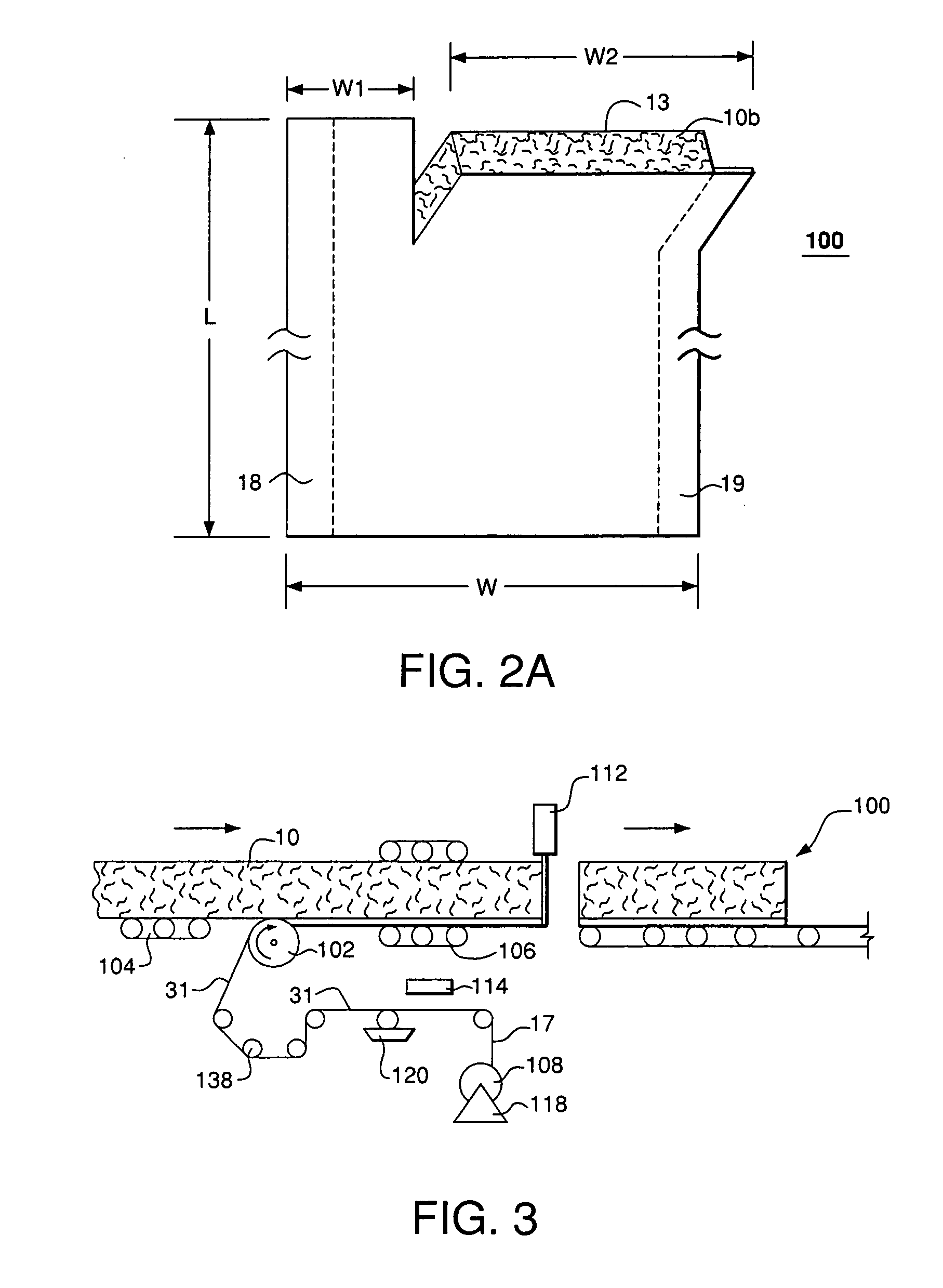Insulation product having directional facing layer thereon and method of making the same
a technology of directional facing and directional layer, which is applied in the direction of heat-proofing, layered products, transportation and packaging, etc., can solve the problems of reducing the width of the vapor barrier, affecting the vapor barrier, so as to reduce the width and reduce the width
- Summary
- Abstract
- Description
- Claims
- Application Information
AI Technical Summary
Benefits of technology
Problems solved by technology
Method used
Image
Examples
Embodiment Construction
[0022] As used herein, the following terms are defined:
[0023]“Mat” means a fibrous material consisting of randomly oriented filaments, short fibers (with or without a carrier fabric), or swirled filaments held together with a binder, and are available in blankets of various thicknesses, widths, weights, and lengths. As used herein, “Insulation Mat” includes insulation boards, such as duct boards, insulation batts and acoustic insulation;
[0024]“Machine Direction” as used herein with respect to a layer means the direction in which the greater number of the fibers of a sheet of paper tend to be oriented as a result of the forward motion of the wire of the papermaking machine. The paper so produced is stronger in the machine direction, and also experiences less dimensional variation in the machine direction due to changes in humidity.
[0025]“Cross Machine Direction” with respect to a layer means the direction at right angles to the machine direction;
[0026]“Tensile Strength” means the...
PUM
| Property | Measurement | Unit |
|---|---|---|
| Ratio | aaaaa | aaaaa |
| Width | aaaaa | aaaaa |
| Tensile strength | aaaaa | aaaaa |
Abstract
Description
Claims
Application Information
 Login to View More
Login to View More - R&D
- Intellectual Property
- Life Sciences
- Materials
- Tech Scout
- Unparalleled Data Quality
- Higher Quality Content
- 60% Fewer Hallucinations
Browse by: Latest US Patents, China's latest patents, Technical Efficacy Thesaurus, Application Domain, Technology Topic, Popular Technical Reports.
© 2025 PatSnap. All rights reserved.Legal|Privacy policy|Modern Slavery Act Transparency Statement|Sitemap|About US| Contact US: help@patsnap.com



